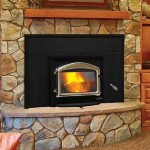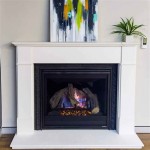Vintage Electric Fireplace Heaters: A Look Back at Warmth and Style
Vintage electric fireplace heaters represent more than just a means of providing warmth; they encapsulate a bygone era's aesthetic sensibilities and technological innovations. These appliances, dating from the early to mid-20th century, offer a unique blend of functionality and decorative appeal, often serving as focal points in living spaces. Their historical significance lies not only in their heating capabilities but also in their contribution to interior design trends and the evolution of home comfort.
The development of electric fireplace heaters paralleled the expansion of electricity access across households. Early models were often bulky and less efficient compared to modern counterparts, but were nonetheless embraced as a cleaner and safer alternative to traditional wood-burning fireplaces. Vintage units frequently feature intricate designs, often mimicking the appearance of traditional hearths with simulated flames and glowing embers. These design elements were crucial in recreating the ambiance of a classic fireplace without the associated mess and maintenance.
Understanding the appeal of vintage electric fireplace heaters requires examination of their construction, stylistic characteristics, and the technological advancements that underpinned their functionality. Moreover, considerations surrounding their safety, efficiency, and restoration are paramount for those interested in acquiring or maintaining these pieces of history.
Design and Construction
Vintage electric fireplace heaters display a wide range of design styles, reflecting the prevailing aesthetic trends of their respective eras. Art Deco influences are evident in streamlined forms, geometric patterns, and the use of materials such as chrome and Bakelite. Other models might exhibit a more traditional or Victorian-inspired design, featuring ornate detailing, faux brickwork, and simulated logs. The materials used in their construction varied, encompassing cast iron, steel, brass, and various types of decorative ceramics.
The heating element itself typically consisted of resistance coils, which generated heat when electricity passed through them. Reflectors, often made of polished metal, were placed behind the coils to direct the heat forward, maximizing its effectiveness. Many vintage models incorporated a rotating drum with painted flames or flickering lights to simulate the appearance of a real fire. This visual effect, though rudimentary by modern standards, was a significant selling point, adding a touch of realism and ambience to the heating experience.
The size and form factor of vintage electric fireplace heaters also varied considerably. Some were designed as standalone units, while others were intended to be installed within existing fireplace surrounds. Wall-mounted versions were also available, offering a space-saving alternative. The overall construction of these heaters was often robust, reflecting a commitment to durability and longevity. However, the components used were typically less efficient than modern heating elements, resulting in higher energy consumption.
Technological Advancements and Functionality
The basic principle behind vintage electric fireplace heaters is the conversion of electrical energy into heat through resistance. The heating element, typically a coil of high-resistance wire, heats up when an electric current flows through it. The heat is then radiated outward, warming the surrounding area. Early models often lacked sophisticated temperature controls, relying instead on simple on/off switches and rudimentary thermostats.
One key technological advancement was the development of simulated flame effects. These effects were achieved through various mechanical and optical means, such as rotating drums with painted flames illuminated by incandescent bulbs. Some models even incorporated small electric fans to create a flickering effect, mimicking the movement of real flames. While these simulated flames were not particularly realistic by modern standards, they contributed significantly to the overall appeal of the heaters, providing a visual element of warmth and comfort.
Safety features were often limited in early vintage models. Overheat protection mechanisms, such as thermal cutoffs, were not always standard. This meant that users had to exercise caution to prevent the heaters from overheating or causing a fire hazard. Later models incorporated improved safety features, but still lacked the sophisticated control systems and safety interlocks found in contemporary units. The progression of flame effect technologies also is noteworthy as it becomes more realistics over time.
Safety, Efficiency, and Restoration
When considering the acquisition or use of a vintage electric fireplace heater, safety is of paramount importance. Many older models lack modern safety features such as automatic shut-off systems or tip-over protection. It is crucial to have any vintage heater inspected and, if necessary, repaired by a qualified electrician before use. Wiring should be checked for damage or deterioration, and any worn or faulty components should be replaced with modern equivalents.
The energy efficiency of vintage electric fireplace heaters is generally lower compared to modern appliances. Older heating elements are less efficient at converting electricity into heat, resulting in higher energy consumption and operating costs. While it is possible to improve the efficiency of some models by replacing the heating element with a more modern unit, this may compromise the heater's vintage aesthetic. A thorough cleaning and maintenance of the reflective surfaces can help maximize the heat output.
Restoring a vintage electric fireplace heater can be a rewarding but challenging undertaking. The process may involve cleaning and polishing the exterior, repairing or replacing damaged parts, and rewiring the electrical components. Preserving the heater's original appearance and functionality is a key consideration. Authentic replacement parts can be difficult to find, and it is often necessary to adapt modern components to fit the vintage design. When performing any restoration work, it is essential to prioritize safety and consult with experts to ensure that the heater is properly restored and safe to operate. Documenting the restoration process can also add value to the heater, preserving its history and enhancing its appeal to collectors.

Barton Living 3 Sided 1500w Vintage Electric Standing Fireplace Stove Heater Firebox Target

Mid Century Modern Vintage Freestanding Electric Fireplace In Norway

Mid Century Modern Sears Roebuck Electric Fireplace Space

Mid Century Electric Fireplace Orange Retro 1970s Vintage Dyna Flame Heater Best

Black Electric Fireplace Heater Log Flame Effect Vintage Decorative Fire 1850w 5055959714701

Mid Century Nos Montgomery Ward Style House Electric Wall Fireplace Chairish

25 Vintage Wood Stove 1400w Electric Fireplace Heater W Flame Effect Black 1 Unit Fred Meyer

14 Inch 1400w Freestanding Fireplace Portable Electric Heater Stove Vintage 3d Realistic Flame For Indoor Use Home Decor Room Com

Black Electric Fireplace Heater Log Flame Effect Vintage Decorative Fire 1850w 5055959714701

Kndko 24 Black Electric Fireplace 1500w Freestanding Portable Indoor Stove Heater W 3d Flame Effect Com
Related Posts








